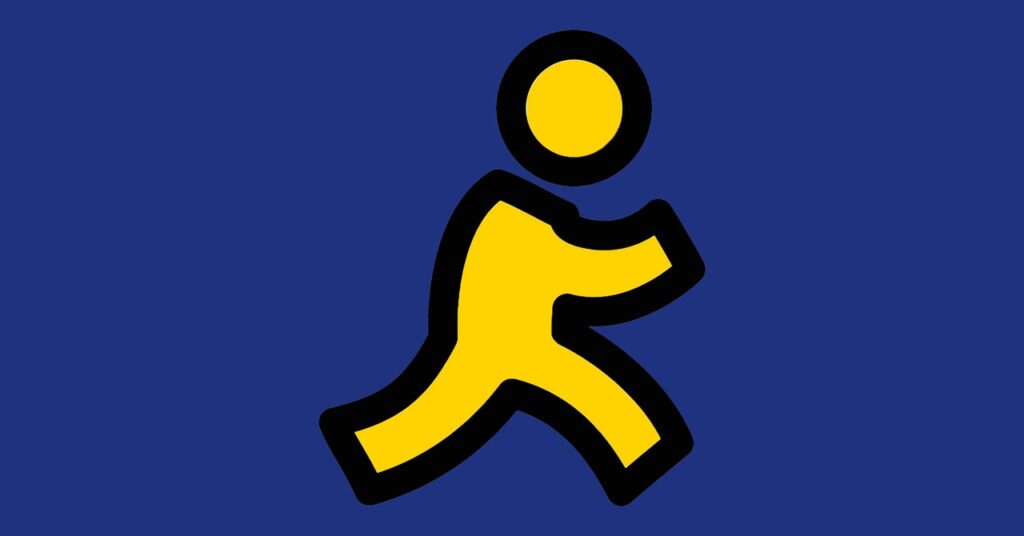It’s Time to Bring Back the AIM Away Message
The live chats of the past are now in our pockets and inescapable. We need better boundaries….


In the beginning, there was AOL Instant Messenger. That wasn’t actually the beginning. Talkomatic, Compuserve’s CB Simulator, and Internet Relay Chat (IRC) all preceded it. But AIM was the beginning of something, a gateway to real-time, all-the-time internet communication for the normies.
You didn’t need to be a computer nerd to ride the AIM train. Your parents got the compact disc in the mail, you plugged your clear plastic corded phone into a modem connected to your Gateway 2000, and you were off. Rather, you were on. Very online, and unaware at the time that the portal would disappear behind you once you crossed through, that you would never again live a wholly offline life.
AIM, which launched 25 years ago this month, represented that moment for me. It propelled me into a universe of limitless pixels, endless distractions, and a penchant for bland screen names (my only embellishment was my basketball jersey number, tacked onto my initials). It was also a live social network. A digital door creaked open, and millions of us scrambled to our seats to see who had just signed on, who was down to chat.
Sometimes you had to step away. So you threw up an Away Message: I’m not here. I’m in class/at the game/my dad needs to use the comp. I’ve left you with an emo quote that demonstrates how deep I am. Or, here’s a song lyric that signals I am so over you. Never mind that my Away Message is aimed at you.
I miss Away Messages. This nostalgia is layered in abstraction; I probably miss the newness of the internet of the 1990s, and I also miss just being … away. But this is about Away Messages themselves—the bits of code that constructed Maginot Lines around our availability. An Away Message was a text box full of possibilities, a mini-MySpace profile or a Facebook status update years before either existed. It was also a boundary: An Away Message not only popped up as a response after someone IM’d you, it was wholly visible to that person before they IM’d you.
Nothing like this exists in our modern messaging apps. Oh fine, you’re going to insist I mention some of the messaging guardrails tech companies have rolled out in recent years. On iPhone and iPad, there’s “Do Not Disturb” and “Focus” mode, while Android OS supports “Do Not Disturb” as well as “Schedule Send,” which, as a Google spokesperson put it, “is great when you’re texting across time zones, such as when you want to send an early morning Happy Birthday to your friend in London.” And yes, you can “Mute Notifications” on WhatsApp.
The always-on workplace chat app Slack offers “Update Your Status,” the closest thing we have to Away Messages today. You can give fair warning that you’re Out of Office or slap a “sick” emoji on your profile. You can write “Writing, please DND,” because you’re once again behind on a deadline. This, it turns out, is an invitation to be disturbed anyway.
These are not guardrails. These are squishy orange cones that we all plow through, like 15-year-olds in driver’s ed. Even the names of these features—Focus, Schedule Send—are phrases born of a work-obsessed culture. Bring back the ennui, the poetry, the pink fonts, the tildes and asterisks.
What I’m reminiscing about is, of course, an entirely different technology protocol. There’s instant messaging, and there’s text messaging. Today the two are practically indistinguishable, but 25 years ago these experiences were disparate. AIM was a desktop client that sent bits of information to an internet server when you logged on, blasting your arrival to the folks on your Buddy List and displaying the same information to you when your friends logged on. It used a proprietary protocol called OSCAR, which stood for Open System for Communication in Realtime. Realtime meant live chat. Text messaging, on the other hand, referred to SMS, or Short Message Service. And this mostly happened on mobile devices connected to cellular networks.




